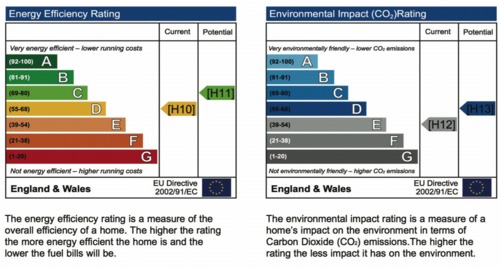It’s easy to get greener
Display Energy Certificates for buildings are intended to stimulate reductions in their energy consumption. Lisa Wilkinson discusses the role of monitoring an targeting to improve the operational rating of buildings.Buildings are one of the UKs biggest carbon emitters and with increasing pressure from Government and impending legislation due out in 2008 for public buildings (Display Energy Certificates [DECs] in October and Energy Performance Certificates [EPCs] in April) businesses cannot afford to become complacent about their energy ratings. Identifying where, when and how much energy is consumed in a building is often seen as facilities and energy management best practice and a socially responsible initiative. However, with legislation coming into force businesses and local authorities in particular will no longer be able to hide behind the practice of ‘voluntary’ energy management. Facilities and energy managers must act now to proactively monitor, record and reduce the energy used by their buildings to get the best possible energy rating and reduce their carbon footprint. The legislation The purpose of the EPC is to record how energy efficient a property is based on its asset rating and will score each building on an efficiency scale of A to G (A the most efficient and G the least). Similar to the current grading system for refrigerators based on energy consumed, the EPC details the building’s energy efficiency based on its ‘asset rating’ — how the building ‘should’ be performing based on property, equipment and usage specifics. The DEC, in contrast, is based on the ‘operational rating’, hence the need for metered data. Making the grade with aM&T* To meet the requirements of this legislation, in particular for DECs, building managers must identify where most of the building’s energy is being consumed, when and how. One of the most important and often overlooked areas of energy management is analysis. The most cost effective, simple to install and user-friendly way of collating and analysing this information is via an automatic monitoring and targeting device (aM&T). However, for business to take the next step, energy management does not start and stop just at the conformance to legislation and hence should not stop at metering the building’s incoming energy supplies. Energy management is also about using the operational rating and the metered data to identify, control and reduce the rating and, ultimately, the energy consumption. Newer and more sophisticated versions of aM&T devices can do this easily. By offering an all-round energy-management package, these devices take traditional aM&T to the next level with the added element of control, which means users can actively control equipment such as heating or lighting according to changing conditions such as weather and coordinate suitable ‘on’ times in response to requirements. They can also remotely turn equipment off if required. These systems therefore not only provide information on operational ratings for buildings as part of the legislation but also provide additional information on equipment conditions and a site’s HVAC&R performance, enabling business to identify inefficiencies in equipment and activities instantly. Meeting DEC legislation is the first step in effective energy management. However ,effective energy management is much more than conforming to legislation; it is also about analysing data to identify opportunities for improving energy consumption and producing information to compare before and after — showing a constant improvement in operational rating.
Two measures of building performance: on the left is the energy-efficiency rating, which is a measure of overall efficiency; on the right is the environmental-impact rating, which is a measure of carbon-dioxide emissions. Buildings with an environmental-impact rating near the top of these scales have less impact on the environment.







